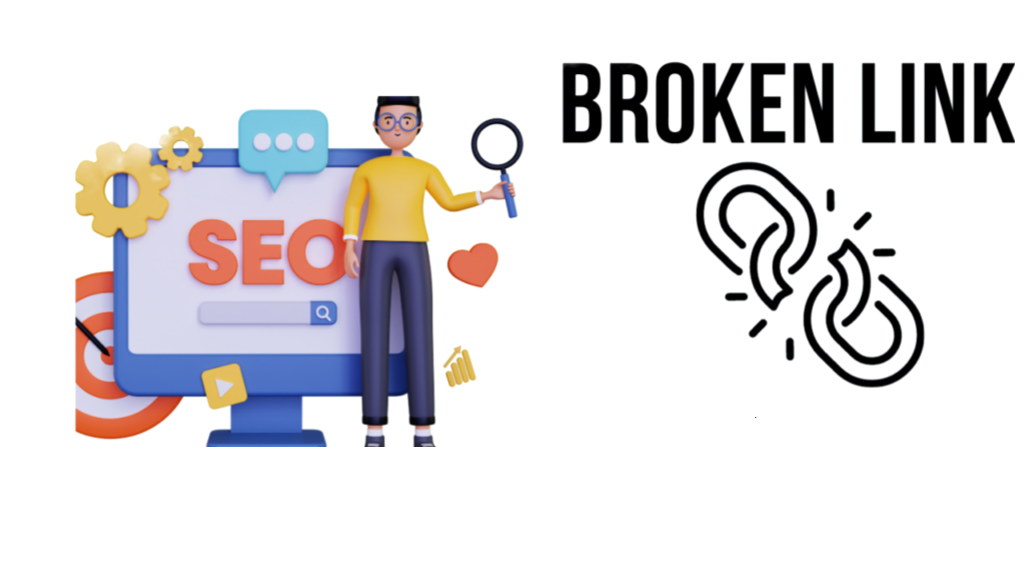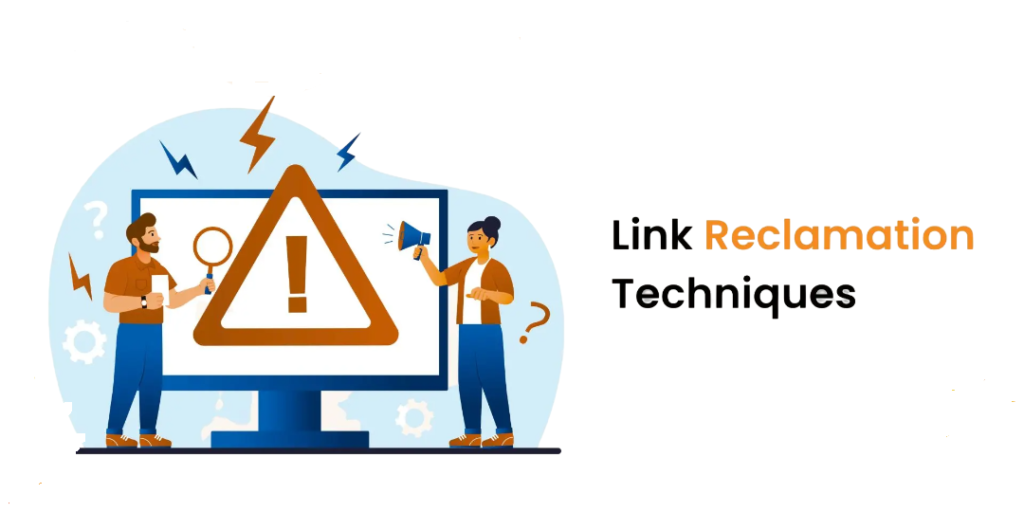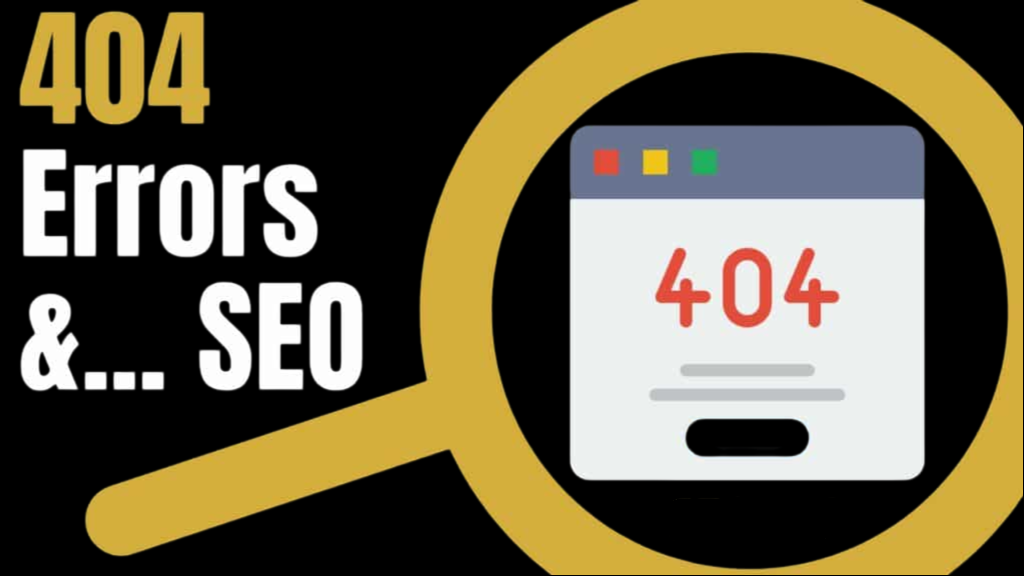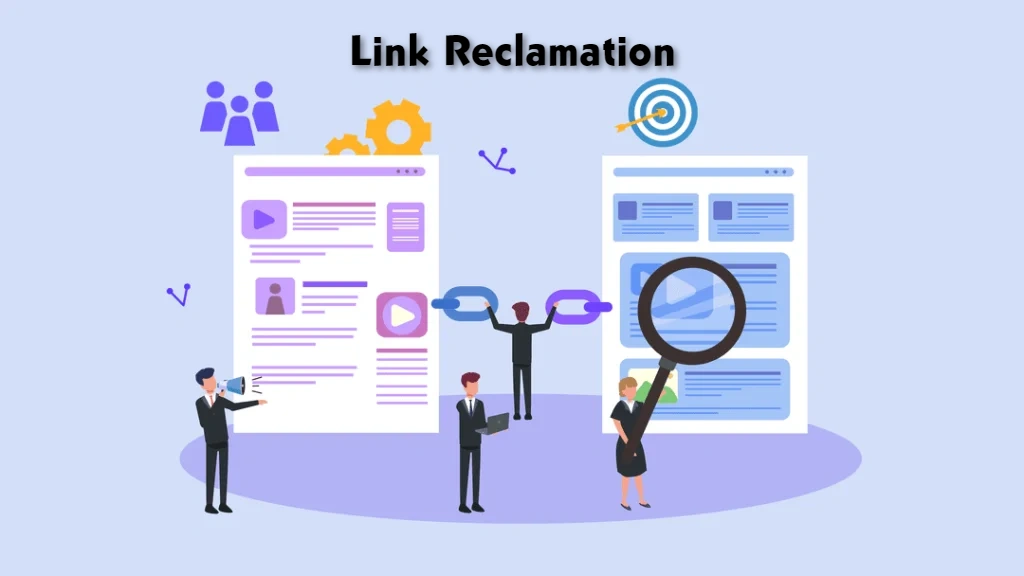Link reclamation in SEO involves the process of reaching out to website owners or editors to update one or multiple links found on their websites. This process benefits both parties because it creates a better experience for users and ensures that websites can continue to dominate the search engine results pages (SERPs) and drive search traffic to target landing pages.
When websites remove pages or change URLs during a site overhaul, it breaks backlinks, and the website’s organic search visibility can suffer. Therefore, link reclamation allows you to quickly fix these broken links and maintain optimal performance and user experience.
In this blog, you can expect a comprehensive exploration of link reclamation, including understanding link reclamation, identifying lost and broken links, reasons for link loss, strategies for link reclamation, leveraging 404 pages for SEO benefits, tools for effective link reclamation, common challenges in link reclamation, measuring the impact of link reclamation on SEO, successful link reclamation examples, and best practices for ongoing link maintenance.
Importance of link reclamation in boosting SEO strategy
The importance of link reclamation in boosting SEO strategy cannot be overstated. It is crucial for maintaining a healthy backlink profile and enhancing SEO performance. By reclaiming lost or broken links, websites can continue to dominate the SERPs and drive search traffic to their target landing pages.
This process is essential for ensuring that the website’s organic search visibility does not suffer due to broken links, ultimately contributing to the overall success of the SEO strategy.
Understanding Link Reclamation
Link reclamation in SEO is an integral part of an effective SEO strategy. It involves the process of finding and replacing lost or broken links to a website. When hard-earned links suddenly vanish or broken backlinks are found, it can devalue SEO efforts and damage a site’s overall credibility. Learning how to reclaim lost links helps in regaining link value, building the link profile, improving the site’s SEO, and overall authority. It is a process that can be started right away, at little-to-no cost.
Differentiating between lost and broken links
Lost and broken links are not the same. Lost links refer to links that were once pointing to a website but are no longer doing so, while broken links are hyperlinks that no longer work due to a page being removed or a URL being changed. Understanding the difference between these types of links is crucial for effective link reclamation efforts.
Impact of link reclamation on SEO performance
Link reclamation plays an integral role in SEO efforts, particularly in maintaining a seamless user experience on a site. It ensures that websites do not lose out on any link juice due to broken links, moved pages, or faulty URL canonicalization. Reclaiming lost or broken links is essential for maintaining the quality and SEO power of backlinks, ultimately contributing to the overall success of the SEO strategy.
Identifying Lost and Broken Links

Link reclamation involves finding and replacing lost or broken links to a website. These links, also known as dead links, can include both internal and backlinks. Internal links refer to hyperlinks on a website that lead to a page on the same website or domain, while backlinks refer to hyperlinks on a different domain that point to the website.
The process of identifying lost and broken links is crucial for maintaining a seamless user experience on a site and plays an integral role in SEO efforts.
Tools and Techniques for Finding Lost and Broken Links
- Google Search Console: Google Search Console provides insights into broken links and errors that Google’s crawlers discover. It offers an automated update of broken links every time Google crawls the site.
- Backlink Analysis Tools: Tools like Ahrefs and Majestic enable users to conduct comprehensive backlink analysis, identifying broken links and providing insights to start repairing the site’s broken links.
- Manual Site Audits: Manual site audits involve a thorough examination of a website’s content and links to identify any lost or broken links. This method allows for a detailed and personalized approach to link reclamation efforts.
Evaluating the Significance of Lost Links for SEO
Evaluating the significance of lost links for SEO is crucial for prioritizing link reclamation efforts. Lost links can impact a website’s authority, backlink profile, and overall SEO performance. Understanding the impact of these lost links helps in determining the urgency and priority of reclaiming them to maintain the website’s SEO value and link equity.
Identifying lost and broken links is essential for maintaining a healthy backlink profile, enhancing SEO performance, and ensuring a seamless user experience on a website. Various tools and techniques, including Google Search Console, backlink analysis tools, and manual site audits, can be employed to identify and prioritize the reclamation of lost links for SEO purposes.
Reasons for Link Loss
A. Natural link decay and its impact: Over time, links can decay or lose value due to various factors, such as changes in the linking page’s status, including 404 errors, noindex attributes, or redirects. This natural decay can lead to the loss of link equity and affect a website’s overall SEO performance.
B. Changes in website structure or content: Structural or content changes on a website can result in the loss of backlinks. For example, if a page is removed or its URL is changed, any existing backlinks to that page may become broken, leading to link loss.
C. Redirects and domain changes: Implementing redirects or changing a website’s domain can impact backlinks. While 301 redirects can help preserve link equity, improper handling of redirects can lead to the loss of backlinks and affect SEO.
D. Competitor actions and negative SEO: Negative SEO tactics, such as building low-quality backlinks or engaging in unethical practices, can negatively impact a website’s backlink profile. Competitors may attempt to harm a website’s rankings by manipulating its backlink profile, leading to link loss and potential SEO repercussions.
Understanding these reasons for link loss is essential for implementing effective link reclamation strategies and maintaining a healthy backlink profile for improved SEO performance.
Strategies for Link Reclamation

A. Prioritizing link opportunities based on impact: It’s essential to prioritize link opportunities based on their potential impact on the website’s SEO performance. This involves identifying high-value lost links and focusing on reclaiming them to maximize the overall benefit to the site’s backlink profile and authority.
B. Crafting outreach emails for link recovery:
- Professional and personalized communication: Crafting professional and personalized outreach emails is crucial for initiating link recovery. Personalization can involve addressing the recipient by name and tailoring the content of the email to their specific interests or needs.
- Providing updated or corrected information: Outreach emails should include updated or corrected information related to the lost or broken link, demonstrating the value of reinstating the link and providing a compelling reason for the recipient to take action.
C. Utilizing social media and alternative communication channels:
Leveraging social media and alternative communication channels can complement traditional outreach efforts. Engaging with reporters, bloggers, and industry influencers through social media can help in building relationships and potentially lead to link recovery opportunities.
These strategies align with various outreach and link-building techniques, including personalized email templates, social media engagement, and targeted communication to maximize the chances of successful link reclamation.
The provided search results offer insights into crafting effective outreach emails, utilizing social media for outreach, and the importance of personalized communication in link-building efforts. These resources can further enhance the understanding and implementation of the strategies for link reclamation.
Leveraging 404 Pages for SEO Benefits

A. Identifying 404 pages and broken links on your website: It is important to identify 404 pages and broken links on your website to understand the scope of the issue. This can be done through tools like Google Search Console, which provides insights into crawl errors and broken links.
B. Strategies for turning 404 errors into link-building opportunities:
- Creating compelling and relevant content: Developing compelling and relevant content on 404 pages can transform them into valuable resources. This can include providing links to popular blog pages, important product or category pages, and a way for users to report a broken link or access an HTML sitemap, as suggested in the search results.
- Redirecting or fixing broken links: Redirecting 404 errors to relevant pages or fixing broken links can help retain link equity and provide users with alternative resources, as mentioned in the search results.
The search results provide insights into the importance of 404 pages in SEO, strategies for handling 404 errors, and the potential benefits of leveraging broken link building. Leveraging 404 pages for SEO benefits involves transforming them into opportunities for link-building and user engagement, ultimately contributing to a positive user experience and improved SEO performance.
Common Challenges in Link Reclamation
A. Dealing with unresponsive webmasters: One common challenge in link reclamation is encountering unresponsive webmasters. When reaching out to request the correction of broken or lost links, some webmasters may not respond promptly or at all, making it difficult to reclaim the links effectively.
B. Addressing disputes over link ownership: Disputes over link ownership can arise when multiple parties claim ownership of a particular link. Resolving these disputes and establishing the rightful ownership of the link can be a challenging aspect of link reclamation efforts.
C. Managing expectations for link recovery success rates: It’s important to manage expectations regarding the success rates of link recovery. Not all lost links can be successfully reclaimed, and it’s essential to set realistic expectations for the outcomes of link reclamation efforts.
These challenges highlight the complexities involved in link reclamation and the need for effective communication, negotiation, and realistic goal-setting when pursuing link recovery.
Measuring the Impact of Link Reclamation on SEO
Measuring the Impact of Link Reclamation on SEO involves understanding the key performance indicators (KPIs) for link reclamation, tracking improvements in search rankings and organic traffic, and utilizing analytics tools to measure success.
A. Key performance indicators (KPIs) for link reclamation: SEO KPIs, such as organic visibility, keyword rankings, organic click-through rate (CTR), and conversions, are essential metrics used to measure the effectiveness of link reclamation efforts. These KPIs help stakeholders understand the success of SEO efforts and can be tracked and measured to gauge the impact of link reclamation on SEO.
B. Tracking improvements in search rankings and organic traffic: Monitoring improvements in search rankings and organic traffic serves as a crucial aspect of measuring the impact of link reclamation on SEO. Higher search rankings and increased organic traffic signify the positive influence of link reclamation efforts on the website’s visibility and user engagement.
C. Using analytics tools to measure success: Analytics tools play a vital role in measuring the success of link reclamation on SEO. These tools enable the tracking of various SEO KPIs, including organic traffic, keyword rankings, and backlinks, providing valuable insights into the performance of link reclamation efforts.
By focusing on these key areas and utilizing appropriate KPIs, tracking improvements in search rankings and organic traffic, and leveraging analytics tools, businesses can effectively measure the impact of link reclamation on SEO and make informed decisions to optimize their SEO strategies.
Best Practices for Ongoing Link Maintenance
A. Regularly monitoring for new lost or broken links: It is crucial to regularly monitor websites for broken links to prevent negative impacts on traffic, user experience, and search engine optimization. Tools like broken link checkers and services such as Semonto and Link Monitor can help in identifying and repairing broken links, ensuring a smooth and error-free website experience for visitors.
B. Proactively updating content to prevent link decay: To prevent link decay, it is essential to incorporate content updates into the maintenance strategy. This involves implementing proper redirects, keeping website content up-to-date, using permanent URLs, and utilizing link checking tools. Staying proactive and ensuring that links are regularly maintained and updated through content updates can effectively mitigate the negative effects of link decay on the website.
C. Staying informed about industry changes and best practices: Keeping abreast of industry changes and best practices is crucial for ongoing link maintenance. This includes staying updated on Google’s expanded guidance on links, HTML best practices, and new link best practices, as well as understanding the importance of monitoring broken links and implementing best practices for network security.
By implementing these best practices for ongoing link maintenance, website owners can ensure a seamless user experience, maintain a healthy backlink profile, and mitigate the negative effects of broken or lost links on their website’s performance.
In conclusion, link reclamation and ongoing link maintenance are essential components of a comprehensive SEO strategy, offering significant benefits for businesses seeking to improve their online visibility and organic search performance.
FAQs for Link Reclamation, Maintenance, and Impact on SEO
What is link reclamation, and why is it important for SEO?
Link reclamation involves identifying and reclaiming valuable backlinks that may have been lost or broken. It is important for maintaining a healthy backlink profile, improving organic search rankings, and enhancing overall SEO performance.
What are the common challenges in link reclamation?
Common challenges in link reclamation include dealing with unresponsive webmasters, addressing disputes over link ownership, and managing expectations for link recovery success rates.
How can businesses measure the impact of link reclamation on SEO?
Businesses can measure the impact of link reclamation on SEO by focusing on key performance indicators (KPIs) for link reclamation, tracking improvements in search rankings and organic traffic, and using analytics tools to measure success.
What are the best practices for ongoing link maintenance?
Best practices for ongoing link maintenance include regularly monitoring for new lost or broken links, proactively updating content to prevent link decay, and staying informed about industry changes and best practices.
How can businesses integrate link reclamation into their ongoing SEO strategy?
Businesses are encouraged to integrate link reclamation into their ongoing SEO strategy to capitalize on the benefits of maintaining a strong backlink profile and improving their online visibility and SEO performance.
What are the long-term benefits of proactive link maintenance? Proactive link maintenance, including link reclamation, offers long-term benefits such as maintaining link equity, improving SEO, and enhancing overall site authority.

